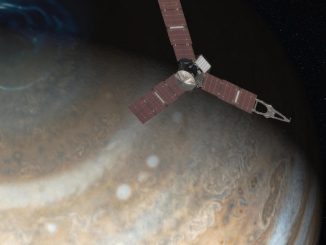
NASA’s Juno spacecraft to remain in current orbit around Jupiter
Concerns about the health of the Juno spacecraft’s main engine have compelled NASA managers to keep the research probe in its current arcing, high-altitude orbit around Jupiter, a decision that will delay the full science return from the $1.1 billion mission but should still allow it to meet all predetermined objectives.









